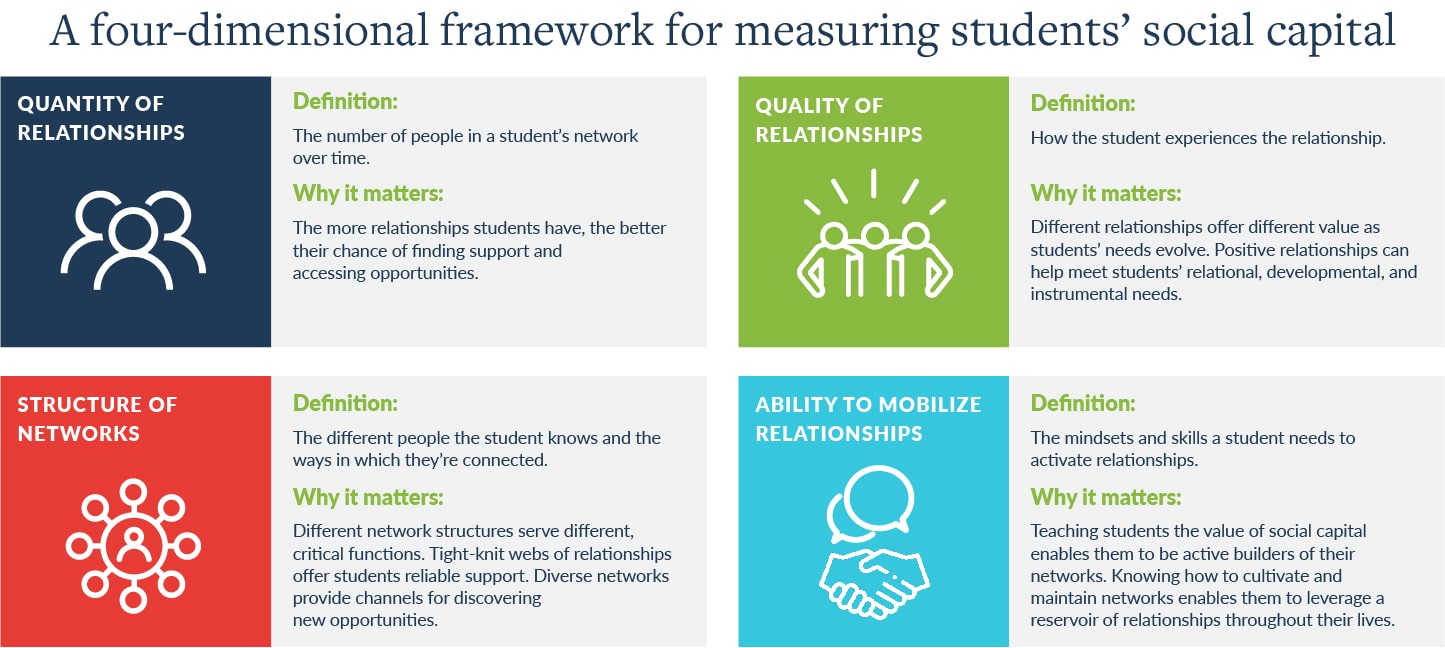FIELD UPDATE, APRIL 2023
In 2020, the Christensen Institute released the first Missing Metrics report, detailing how schools and nonprofits were starting to measure their students’ networks.
In the three years since releasing Missing Metrics, the field has seen significant developments in surveys and other measurement strategies. As the urgency to understand and leverage social capital gains a stronger foothold across education, industry, and research, advances in measurement are taking off on multiple fronts. These measures can help schools navigate the social effects of myriad post-pandemic realities: stark learning gaps, worsening mental health crises, significant enrollment declines, and a cooling job market. Confronted with these challenges, understanding the depth and scope of the relationships and resources that students can depend on is more critical than ever.
Advances in surveys, student-facing tools and data, and technology-enabled data and research over the past few years mark important strides toward measuring students’ networks in more equitable, meaningful, and actionable ways. Social capital is a potent but often hidden asset in the opportunity equation. With ever-increasing momentum and technical capabilities, social network metrics will only continue to evolve and gain traction, revealing the relationships and resources that are shaping students’ access to opportunity.
In the course of our research, we’ve kept an updated list of sample survey items and measurement strategies used by organizations in the field aiming to measure the size and strength of students’ networks. Download sample survey items from the field here.
EXECUTIVE SUMMARY
Young people need the right resources at their disposal to navigate uncertain times and to pursue their evolving interests and passions. All too often, however, a critical resource in the opportunity equation repeatedly goes unmeasured: students’ social capital.
Social capital describes students’ access to, and ability to mobilize, relationships that help them further their potential and their goals. Just like skills and knowledge, relationships offer resources that drive access to opportunity.
Most schools and programs wholeheartedly agree that relationships matter. But far fewer actually measure students’ social capital. Oftentimes, relationships, valuable as they may be, are treated as inputs to learning and development rather than outcomes in their own right. In turn, schools routinely leave students’ access to relationships and networks to chance.
To address this gap, a host of early innovators across K–12, postsecondary, and workforce development are making important strides toward purposefully building and measuring students’ social capital in an effort to expand access to opportunity. Drawing on those emerging practices, this paper offers a framework for measuring social capital grounded in both research and practice.
By intentionally measuring students’ social capital, education systems can start to build an evidence base for closing the social side of opportunity gaps and ensuring all students are supported equitably in their path to economic prosperity.





